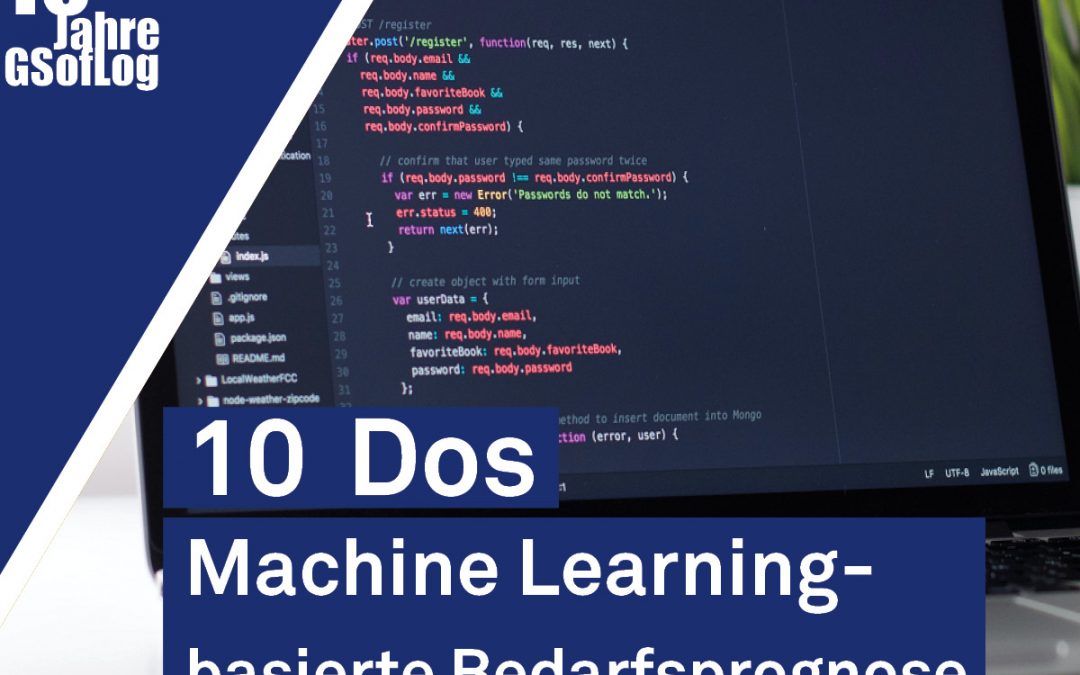Good demand forecasts are the basis for comprehensive supply chain planning and the resulting optimization of processes. The more accurate the forecasts, the lower the safety stock, depreciation and tied-up capital.
With forecasting techniques based on machine learning (ML), an artificial system learns to recognize patterns in existing company data, assess future data, make decisions and warn of errors. But what really matters and how does getting started with ML-based demand planning work? We have summarized the ten Dos for you.
- Check and optimize your data situation!
For an algorithm to draw valid insights from data – in other words, to lay the foundation for machine learning – a critical amount of data of the right quality must be available. Have a potential assessment performed to clarify how well your company is positioned in this regard. - Develop a comprehensive understanding of data!
Only those who know and understand the content of their data can provide the ML algorithm with meaningful and complete data sets – a key requirement for the success of ML-based methods. An algorithm can only be as good as the database it learns from. - Build your ML experts!
As with conventional statistical demand planning methods, the calibration of ML methods requires methodological know-how and is a continuous optimization process. So you should build appropriate experts in your team who are familiar with the methods and can continuously adjust the set screws. - Take individual requirements into account!
There is no all-purpose method. Rather, an ML algorithm must be selected sensibly based on the use case. Framework conditions to be considered here are, for example, the demand pattern, the required forecast horizon, the available database and the accepted computational effort. - Consider the effort of data preparation!
In order to be able to train ML approaches, the data must be prepared with respect to the use case with a high expenditure of time. Experience shows that significantly more than half of the total effort goes into data collection, data cleaning and structuring, formation of training datasets, etc. Therefore, do not underestimate the time and personnel required to create a good database. - Bring in domain knowledge!
To successfully bring ML-based forecasting into use, domain and method specialists need to be in close communication. Form a forecasting team to bring together the knowledge of your sales and ML experts. Only in this way will you also create sufficient acceptance among employees and be able to teach the algorithm to make meaningful decisions. - Keep your ML team up to date!
To improve the performance of ML algorithms, intensive feature engineering is required. This involves preparing the data in such a way that the algorithm can identify possible correlations between an influencing variable (e.g. marketing action) and the result variable (e.g. sales volume) in the first place. Therefore, make sure that new developments from day-to-day business reach your ML team! - Train!
The longer a model is trained, the more accurately it can take into account the characteristics of the data set and the more accurate your forecast will be. - Use the new possibilities!
Especially for demand forecasting, a variety of ML-based methods and empirical values now exist. Exchange information with other companies about their experiences in this area and involve external experts. - ML is not an end in itself: Use the best procedure!
Companies, customers and products are different. Therefore, it is always necessary to analyze with which procedures the best forecasting qualities can be achieved. Sometimes conventional statistical methods deliver better results than the latest ML algorithms! So only use ML-based demand forecasting if you see a clear added value in using these methods.
Know today what demand is realistic tomorrow, in a month or in a year? What company wouldn’t want that? But don’t forget, forecasting models are merely possible scenarios with a certain probability – but if they are based on meaningful data, you can count on high decision quality. You may even be able to factor in the probabilities of emerging pandemics in the future. In this way, you would be prepared for Corona 2.0 in your requirements planning in the event of an emergency.
Our Experts

Fraunhofer-Institut für Materialfluss und Logistik IML
and his colleagues Saskia Wagner Sardesai, Josef Kamphues, Philipp Klink, Nikolas Moroff
